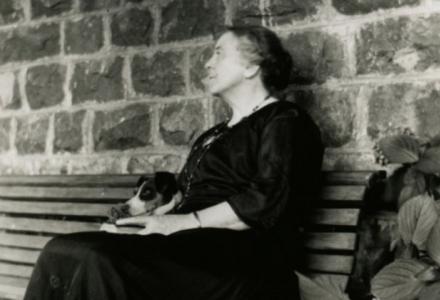From the day his son Mervyn was killed in Sinai to the moment of his own death twelve years later, Justice HB Higgins set out to remember. It was not just the ornate Celtic cross he erected over the family tomb at Dromana in Victoria. Or that all Mervyn’s letters were typed and bound, his photographs framed and treasured, his officer’s kit assembled like a shrine in the family household. When one requests a dead soldier’s service record from the National Archives of Australia the folder is unlikely to run to a few dozen pages; the bare details of postings and promotions; Mervyn’s service records swells to many hundreds of pages. Between 1916, the year of Mervyn’s death, and 1924, when Higgins at last stood by his son’s distant grave, the High Court judge writes one letter of inquiry, complaint or outright reprimand after another.
The death of a son is always tragic, but it was the waste of this war which most outraged Higgins. Mervyn was killed in a brief but savage action against the Turks at El Magdabha. The battle had little strategic significance and Mervyn was shot whilst taking prisoners. It should have been a consolation that the young soldier died almost instantly. He felt ‘absolutely no pain’, a comrade wrote, and the body was guarded by his men until the time came for burial. They lowered their young captain into the earth on Christmas Eve, burying him ‘right where he fell’. A rough wooden cross was raised and the padre read a service. But for the family back at home this swift death and hasty burial meant no last message, no final farewell. And everything done in the wake of Mervyn’s death, from the epitaph chosen for the makeshift cross to the return of his dusty belongings to wet, windswept Dromana, served to prolong and sharpen the grief of his father. The whole process of public memorialisation went seriously wrong in the case of Mervyn Bournes Higgins.
The first failings were easy to forgive. The family knew that weeks, sometimes months would pass between the first cable confirming death and some ‘greater detail’ from the chaplain and fellow officers. But the wait was torturous and in the meantime Higgins wrote obsessively to the authorities, extracting every possible detail of his son’s service. And he longed—compulsively—for some token of his boy. Mervyn might not be coming home but every day the family waited for the arrival of his kit. When four boxes of belongings finally arrived in Melbourne, two were railed and carted all the way to distant Dromana (a holiday residence, closed out of season) and two mislaid in the railway station at Mornington (the line stopped well-short of Dromana). Higgins’ distress still howls from his hastily scribbled handwriting: first his son and then these ‘precious things’ had been lost in a kind of limbo. And all the authorities seemed capable of was ‘wooden inaction’.
Nor did Mervyn really rest in peace. The body was exhumed and re-interred on two different occasions; the cross that came to mark his grave denied him a soldier’s death (‘died of wounds’ was not quite the same as ‘killed in action’); absurd and ‘rigid’ rules prevented sending Mervyn’s photograph to friends and family in England, and even the War Memorial incorrectly recorded the action in which his life was taken.
Seven years after his son’s death, Higgins finally secured permission to visit the grave. It was a journey of over 18,000 miles, and one an old, sick man was barely capable of undertaking. Arriving in that lonely corner of the Sinai must have been a terrible moment. The cemetery at El Magdhaba was still a wasteland; water could not be had, the plots were stark and windswept and all the plants had perished. Higgins found no permanent memorial to his son’s memory, the marble for the tombstone had still not arrived. A tilting cross seemed lost in the shifting sands of the desert.
The Higgins correspondence reminds us of an unfathomable loss—the separation of an only son from a father who always loved him. It alerts us to the way formal practices of commemoration failed to comfort many who lost their loved ones. And it suggests the bereaved were as much a casualty of war as the young men taken from them. ‘My grief’, Higgins wrote, ‘has condemned me to hard labour for the rest of my life’.
Justice Higgins became the President of the World Disarmament Movement and devoted the rest of his life to the cause of peace. For him the Great War had been the war to end all wars, otherwise how could he possibly justify the loss of his only loving son. Higgins died in 1929, when already a new war was brewing in Europe. He was buried in Dromana beneath a cross bearing Mervyn’s name.
For full attribution of sources, suggestions for further reading and an extended version of the story itself see ‘My grief condemns me: Mervyn Higgins’ in Bruce Scates, Rebecca Wheatley and Laura James, World War One: A History in 100 Stories (Melbourne, Penguin/Viking, 2015) pp. 50-54; 355.



